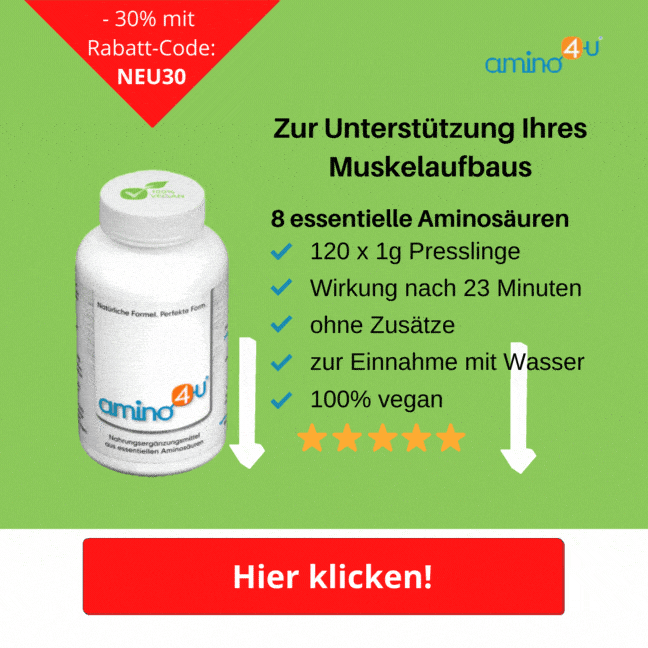Bodybuilders and strength athletes have long been interested in the topic of building muscle. Many people realize that having a certain amount of muscle mass benefits their health and well-being. In addition, the question of muscle building products often comes up.
The older people among us in particular are often affected by age-related muscle loss (sarcopenia). For many of us, a youthful appearance, more strength and fitness are reasons enough to work on growing our own muscles .
Anyone who deals with the topic will come across one or two products that are supposed to support muscle building . You may have already found that the large number of product recommendations here tends to add to the confusion.
rel=""Fast muscle building : Which is the best muscle building product ? Does that even exist? We will address this question in the following article.
Do you need products to build muscle?
Your immediate answer to this question is probably: protein. Most of us know that protein is the building material for the body's tissues.
Muscles also consist predominantly of protein. It is therefore not surprising that a large number of muscle building preparations advertise protein in one form or another, which are said to support muscle growth particularly well.
Is it necessary to take certain supplements for muscle growth ? Aren't there foods that can help build muscles? Is protein the same as protein?
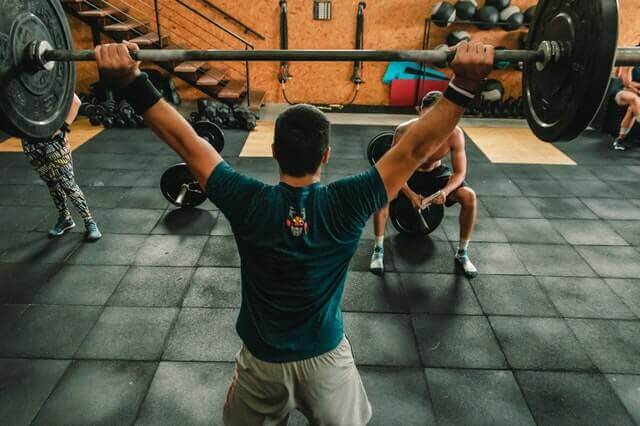
Typical muscle building preparations and their special properties
In the bodybuilding scene, we come across a wide variety of offers that have to do with building muscles , especially on the Internet.
These are usually preparations in powder form that contain either protein from various sources or individual amino acids in singular or grouped form.
Ready-made protein drinks and bars are also offered, which are also intended to support muscle growth . These products are all about protein.
It seems as if you have to have the right protein product available at all times in order to do something good for your muscles. The protein products also have application instructions that describe taking the product in connection with physical training.
How can you choose the best muscle building supplement from the abundance on offer?
What special requirements do bodybuilders and strength athletes have?
The athlete scene around muscle growth usually wants products that stimulate muscle growth particularly quickly and intensively.
These athletes follow special nutritional routines and maintain separate phases in which weight loss and muscle building alternate.
Such routines are neither suitable nor particularly recommended for the average person. They are often associated with intensive effects and interference with the body's metabolism .
Accordingly, these athletes often choose preparations for muscle growth that have a particularly intensive effect and can sometimes also have intensive anabolic effects.
In this context, anabolic means that it involves an intensive effect on metabolic functions. During the building phase, the entire body should be converted to building.
As a rule, such preparations and programs have nothing to do with moderate, more natural muscle growth . The term anabolic steroids also has a non-serious side.
Some strength athletes use preparations that work with substances such as hormones that are not approved for this purpose. Under certain circumstances, such non-approved substances can be used to achieve muscle building processes that even exist without intensive training stimuli.
However, most of these preparations are harmful to health. For this reason, their use is not legal.
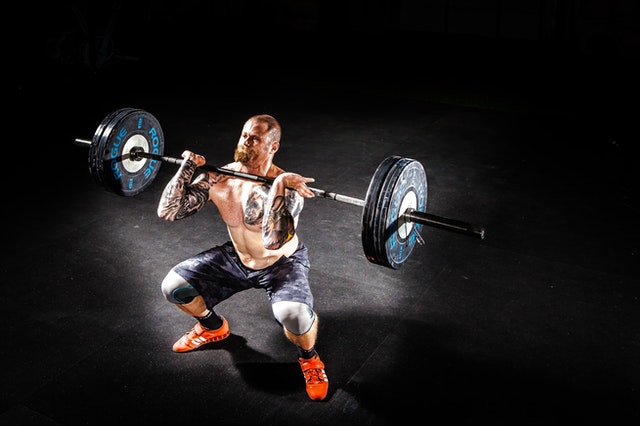
Building muscle: Keyword protein
The muscles rely on an adequate supply of protein if they are to grow. Proteins and with them the smallest building blocks, the rel=""amino acids, form the building materials of all body tissues.
Proteins are groups of substances that are subject to constant transformation processes like no other substances in the human body. Anyone interested in muscle growth should therefore look into the topic of protein.
Proteins can differ in many ways. Not all forms of protein are used to build body tissue. They are also involved in many other metabolic processes in the organism .
What is particularly important for the general protein supply of the human body is the distinction between essential and non-essential amino acids .
While our body forms the non-essential building blocks itself, we must absorb the essential amino acids with our diet.
This means that our food contains the 8 building blocks:
- Isoleucine
- Leucine
- Valine
- Tryptophan
- Methionine
- Lysine
- Phenylalanine
- Threonine
should contain.
Is this just a general agreement instruction or do the essential amino acids also have something to do with the question of the ideal muscle building preparation?
In order to clarify this question, we will take a closer look at muscle growth and the utilization of protein in the human body.
Why do muscles grow and what role does protein play in building muscle?
Our muscles don't just grow through a muscle-friendly diet alone. Building muscle requires another factor. These are stimuli.
Movement and training stimuli, balanced with rest breaks , allow the muscle to grow. The prerequisite for its growth is that there is enough building material available. The main building material for growth is protein.
In this context, we could assume that protein-rich foods are always muscle-building foods. However, this is only partially true.
The protein contained in different foods can be used by the human organism to varying degrees. As a rule , protein from animal foods is easier to use than protein from plant foods.
The easier the protein from food is to use, the more protein is available to our body for its conversion and conversion.
Muscle and fat
Anyone who looks at the strict diet and training routines of bodybuilders quickly gains a very special insight: body fat and muscle have a somewhat antagonistic relationship.
This means that strength athletes repeatedly insert phases of dieting in order to reduce body fat. Only then do they devote themselves to building additional muscles. Many muscle building supplements are tailored to these specific routines.
They often cannot demonstrate their muscle-building effect convincingly with a normal diet and lifestyle.
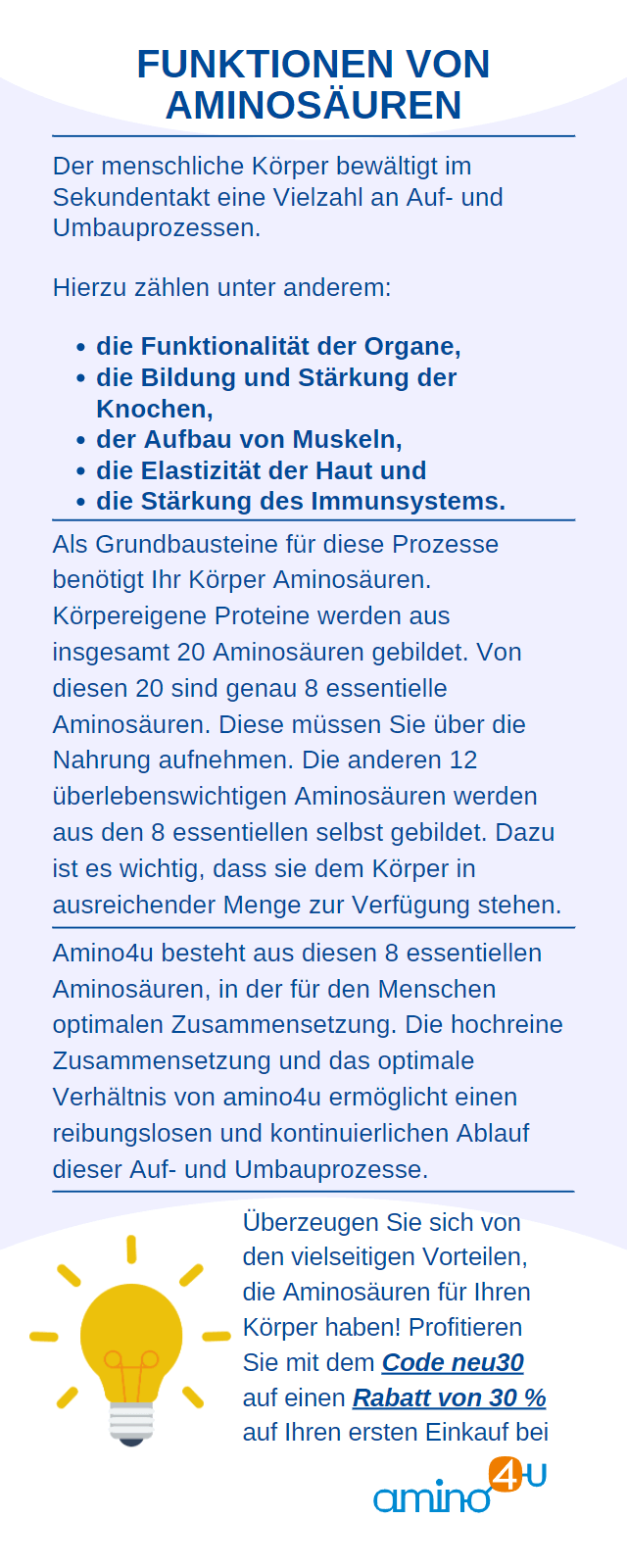
Preparations with different protein sources
If we look at the different usability of proteins from different sources, protein products that combine protein from different sources can be justified.
For example, whey protein (whey) is often combined with various other types of protein or recommended as a high-quality solo product to build more muscle mass .
Other offers emphasize soy protein as a particularly easy-to-use plant protein source . As a standard, no statement can be made as to which of these protein products is individually considered the best muscle building preparation .
On the one hand, there is the question of protein requirements. Average recommendations often assume a value of 0.8 mg per kilogram of body weight.
For athletes, seniors and other people in special living circumstances, this value can rise up to 1.7 mg/kilogram of body weight per day.
It depends on your personal circumstances whether you should supplement protein-rich, muscle-promoting foods with another protein product.
As we have already seen, the life situation of an average person is different than that of a strength athlete. Strength athletes consciously consume isolated protein supplements as part of their diet and training routine .
An important factor because the entire diet is tailored to the training plan. If you offer your muscles little or no training stimulation, you will have enough protein in your body with isolated protein products.
However, the muscles may not respond to it. On the contrary, the kidneys may have to excrete this extra protein, which can put a strain on the human organism . Some doctors, for example, are very critical of the intake of more protein.
The amino acid pattern
The American scientist Prof. Luca-Moretti developed the theory of the human amino acid pattern. According to his scientific approach, the essential amino acids form the human amino acid pattern.
This amino acid pattern is protein. It can be used almost 100% by the human body as a building material for body tissue.
The scientist also points out that most foods only incompletely reproduce this amino acid pattern with the essential amino acids .
He emphasizes that the excellent usability of the amino acid pattern only exists if all 8 essential amino acids are available in sufficient quantities at the same time.
If you follow this theory, amino acids, especially essential amino acids , are important for muscle and muscle growth. A product that contains all 8 essential amino acids would therefore be important.
From a nutritional perspective, this would mean almost 100% usable protein would be available for muscle growth . All that was missing was the second building block of muscle growth: training and exercise.
The theory of the amino acid pattern also has a special charm. With a clever combination of foods, the body can incorporate easily usable protein into the muscles without additional preparations.
Even if you don't follow this theory, you shouldn't underestimate the importance of essential amino acids for muscle growth.
Other amino acids and amino acid groups for muscle growth
Many strength athletes are convinced that the combination of isoleucine, leucine and valine, known by the abbreviation BCAA , is particularly effective in promoting muscle growth.
They assume that 3 branched-chain amino acids are available to the body particularly quickly. Some effects on muscle growth and muscle protection are also described for these amino acids.
Among other things, preparations with BCAA are intended to enable longer exertion.
(Source: Journal of Sports Medicine and Physical Fitness, 2000, Vol. 40, pp. 240-246)
Direct effects on muscle growth have not yet been proven.
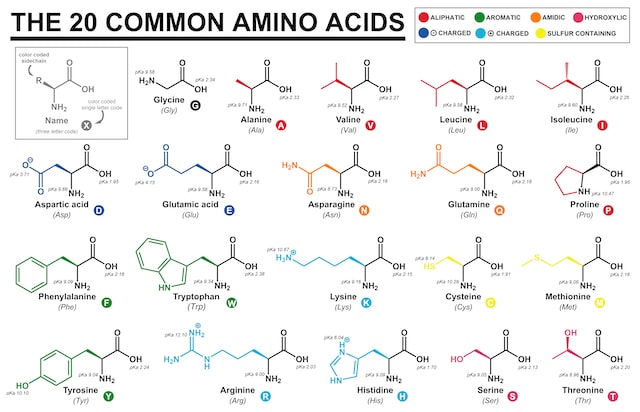
creatine and other substances
Among the preparations intended to stimulate muscle growth , there are also substances other than amino acids. For example, creatine is a substance similar to some amino acids that is found in the body, among other things, in the muscles.
There is evidence that increased performance could be achieved through additional creatinine intake in connection with strength training.
This increase in performance could then also affect muscle growth if the muscle has more creatine.
Many athletes rely on the vasodilating effect of the amino acid arginine. The associated increased endurance during strength training also has a positive effect on building muscles.
It is not yet entirely clear whether arginine can also support fat loss through the release of growth hormones .
Is there the ideal muscle building product?
Finding the best means for building muscle among the many products requires a very individual choice. There is no single best remedy in this area.
Rather, it depends on your personal circumstances and your goals for building muscle . For example, as you get older, are you more concerned with maintaining muscle and building muscle easily?
Muscle-building foods (with easily usable protein) and nutritional supplements with essential amino acids can serve you very well.
If, on the other hand, you have somewhat more ambitious goals as a recreational athlete, it may be worth trying one or two BCAAs and an additional protein preparation with a particularly easy-to-use protein mixture.
Strength athletes and bodybuilders give a different answer when someone asks the question: Which muscle building products do you need?
They specifically incorporate muscle building supplements into their training and nutrition routines .
However, when choosing the respective product, personal experience is important. Standardized recommendations cannot be given here either.
There is no legal and health-friendly preparation that alone builds more muscles without appropriate training stimuli. Preparations that promise this are not reputable.
In addition to a protein-rich diet , building muscle is associated with appropriate training stimuli. These can be very moderate, especially for untrained people.
Without the training stimuli and subsequent rest phases, the muscles cannot build up.

